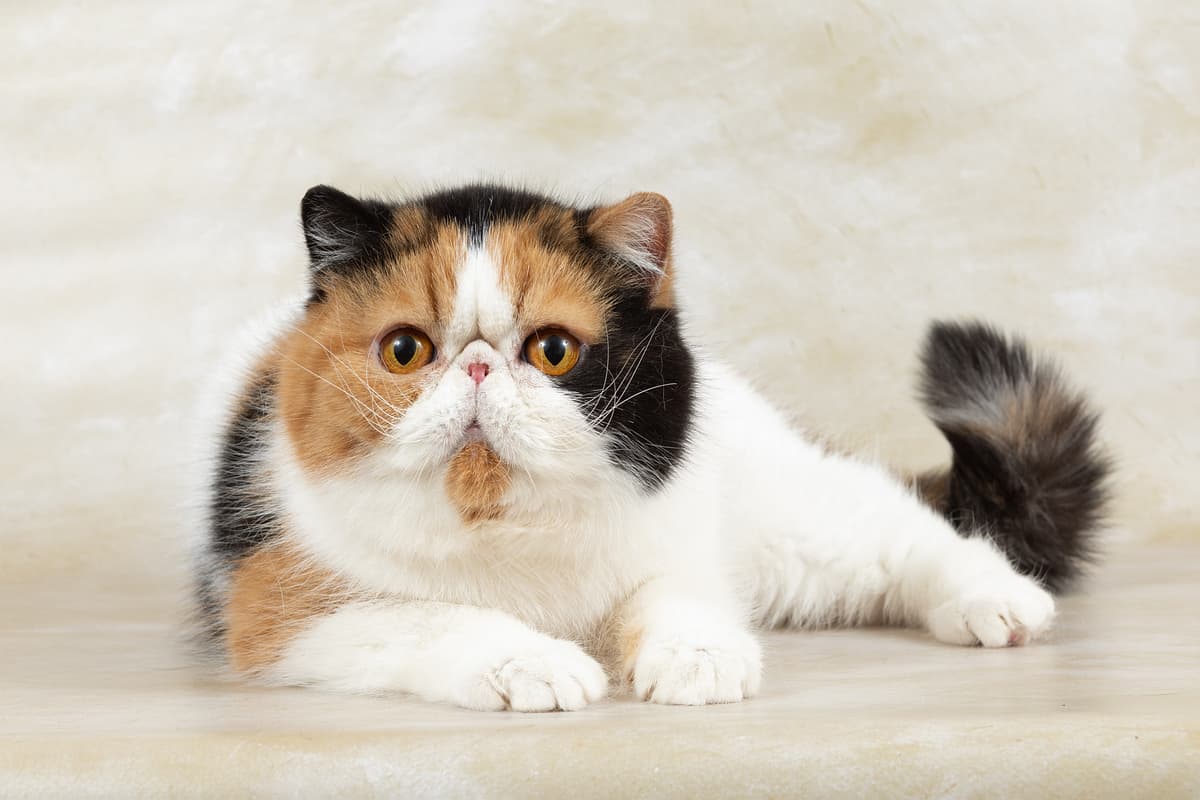Exotic vs Norwegian Forest Cat
Discover the differences between Exotic and Norwegian Forest Cat to make the best choice for your situation.
Try different breeds

Exotic
A plush-coated, affectionate cat with a calm, easygoing personality. Loves relaxed companionship and adapts well to indoor family life.

Norwegian Forest Cat
Majestic and affectionate, this sturdy cat charms with a thick, water-resistant coat and a gentle, playful spirit. Adaptable and loyal, it thrives in active households and quiet homes alike.
Quick comparison
Medium
3.5–6.5 kg
Shorthaired, plush
12–15 years
3–5.5 kg
Low activity needs
Large
5–9 kg
Longhaired, water-repellent
12–16 years
3.5–7 kg
Moderately active
Personality & behavior
Compare the personality traits and behavioral characteristics of both breeds.
Exotic
Affectionate and sociable with people and pets
Learns routines and environment quickly
Moderate activity, enjoys relaxed environments
Enjoys gentle play and interactive toys
Adjusts well to new surroundings and changes
Norwegian Forest Cat
Enjoys human company, gentle with children
Learns routines and new environments quickly
Moderate activity, enjoys climbing and exploring
Likes interactive games and toys
Adjusts well to home changes and new people
Care needs
Exercise, grooming, and daily care requirements
Exotic
Polycystic kidney disease, brachycephalic airway syndrome
Norwegian Forest Cat
Glycogen storage disease IV, hypertrophic cardiomyopathy
Suitability
How well each breed fits different living situations and families
Exotic
Very suitable
Exotic cats are typically gentle, calm, and easy for beginners to manage
Perfect fit
Their relaxed nature and low activity needs suit small living spaces well
Not ideal
They prefer quiet environments and do not thrive amid constant activity
Good option
Exotics are patient and tolerant, generally getting along with respectful children
Highly suitable
They tend to be sociable and can coexist peacefully with other pets
Prone to anxiety
Exotics dislike being alone for long periods and may become stressed or withdrawn
Norwegian Forest Cat
Good option
Gentle and adaptable, but benefits from owners willing to learn grooming needs
Works with effort
Can adapt to apartments if provided climbing spaces and stimulation
Highly suitable
Enjoys play and activity, fitting well in energetic homes
Very friendly
Patient and gentle, generally tolerant of respectful children
Good companion
Gets along with other pets if introduced properly and given space
Not ideal
Dislikes long periods alone and may develop stress or boredom
Breed strengths
What each breed excels at and their best qualities
Exotic
- Affectionate with family members
- Generally quiet and low-vocal
- Tolerates children and other pets well
- Playful but not overly demanding
- Low grooming needs compared to Persians
Norwegian Forest Cat
- Adaptable to various living environments
- Affectionate without being overly demanding
- Strong climbers with agile movement
- Thick double coat protects in cold climates
- Generally healthy with few genetic issues
Challenges & considerations
Potential challenges and considerations for each breed
Exotic
- Prone to respiratory issues due to flat face
- Sensitive to heat and humidity
- Can develop tear staining around eyes
- May experience dental problems
- Needs regular face cleaning to prevent buildup
Norwegian Forest Cat
- Requires regular grooming to prevent mats
- Prone to obesity if under-exercised
- Can be shy with strangers initially
- High prey drive may affect small pets
- Needs mental stimulation to prevent boredom
Ready to choose your perfect breed?
Learn more about each breed or compare other breeds to find the perfect match for your lifestyle.
Discover more helpful tools
Make use of our other free tools to get the most out of your pet experience
